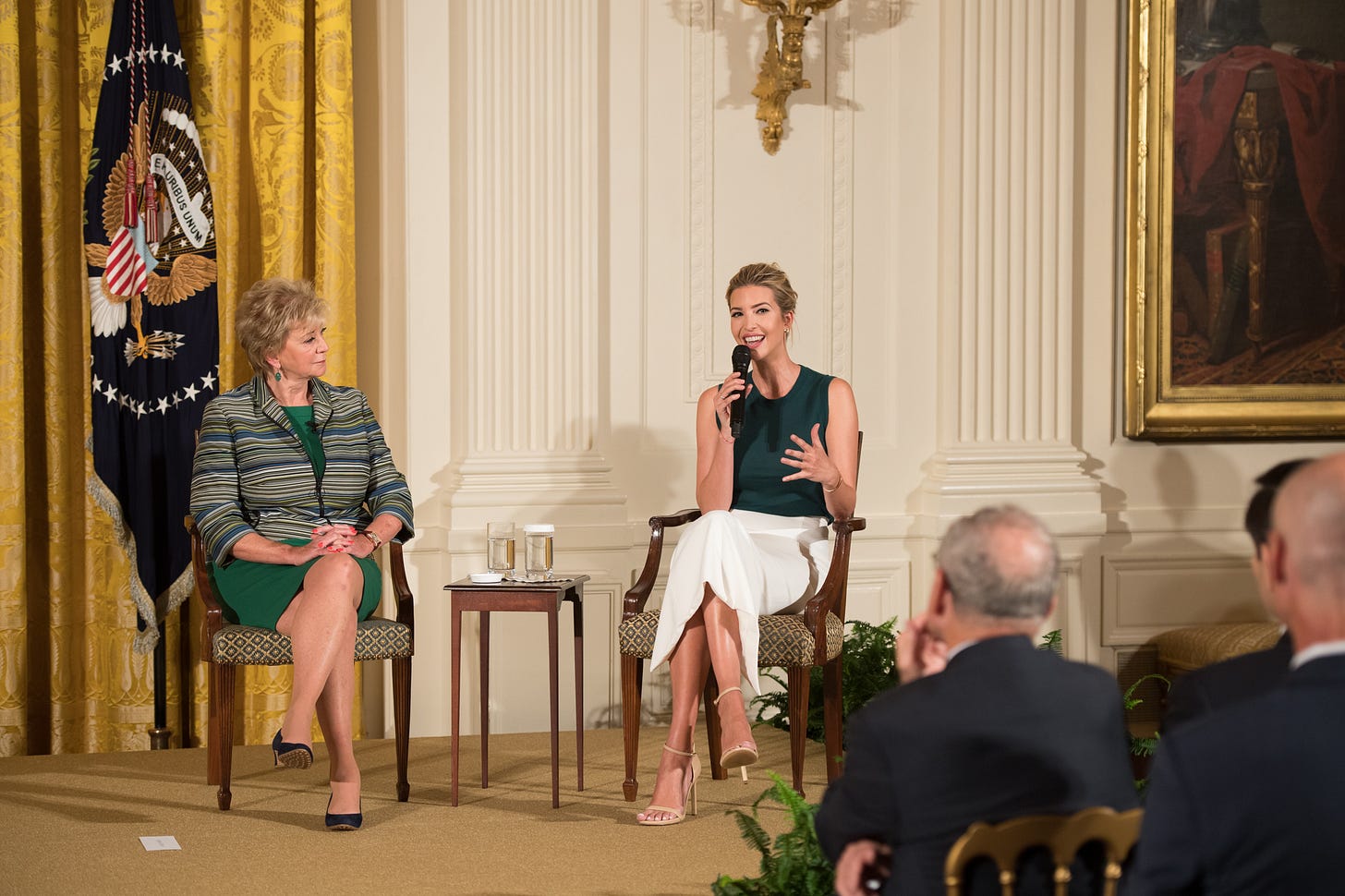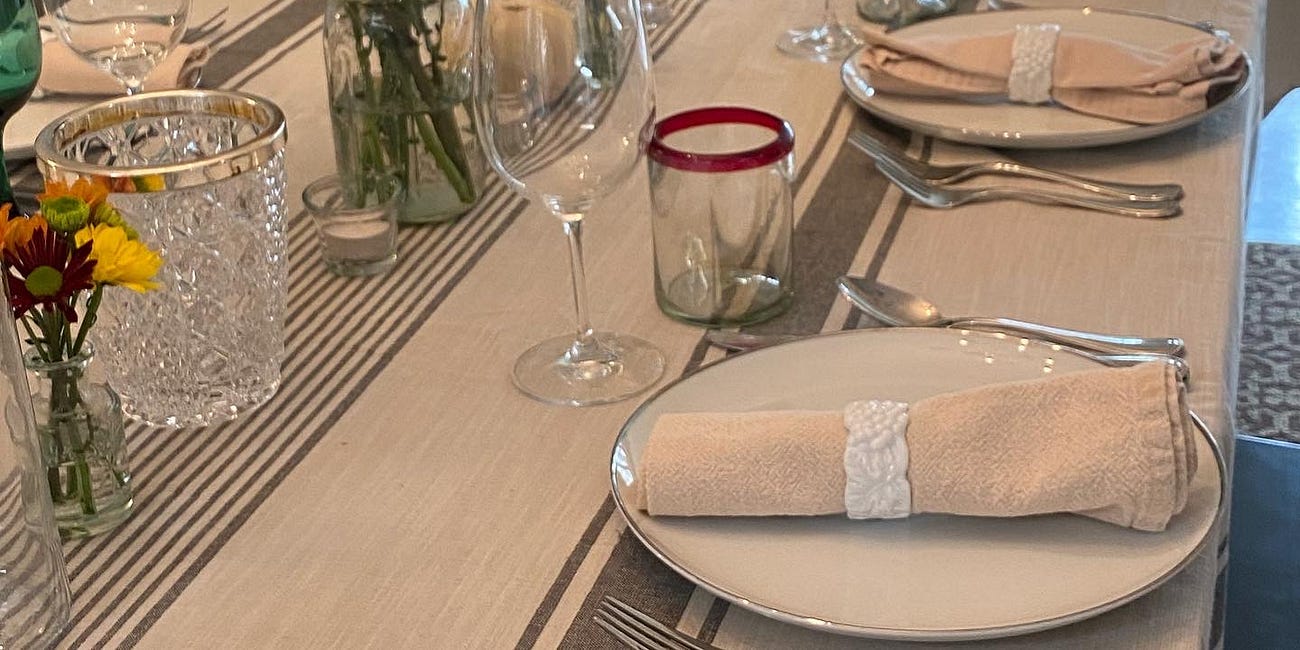What's Ahead For Schools In the Trump Era?
We don't fucking know, but we're going to talk about it anyway.
There was a small buzz this week in education policy circles, because Trump announced his pick for the Department of Education — WWE Empress, Linda McMahon. It was a small buzz, because nobody really knows what she’s going to do, but everyone has opinions. Including me.
We’re already discussed his plans for the Department of Education. The Hechinger Report published their analysis of what would happen if Trump eliminated the DOE. They came to a very similar conclusion: “Deleting the agency would not undo federal law providing money for students in rural places, with disabilities or who come from low-income families, but doling out that money and overseeing it could get messy.”
Inequities
In the 74, Linda Jacobson highlighted McMahon’s concern with racial and income inequalities in our country. Bush used the Department of Education to implement his NCLB plan, which aimed to reduce those inequities with standards and accountability. It’s unclear how McMahon can make those big national changes without a Department of Education to implement her vision.
Still, if McMahon can manage to shine a spotlight on inequities, she’ll win me over. There’s no question that low-income kids get a substandard education in our country, which has far-reaching implications for their socio-economic levels. In my home state of New Jersey, over 80 percent of third graders in Newark schools cannot read on grade level. As a society, it’s a disaster that we have too many high school graduates who can’t read past a fifth grade level or do long division.
I was a fan of NCLB and was a little sorry to see the plan gradually unravel. Now, it’s hard to get schools and state leaders energized about making any changes to deal with inequities. There is a ton of evidence that a science of reading curriculum helps to raise test scores, but we can’t even get those reforms going.
It would be interesting, and disappointing, if Republicans once again led the charge for reducing inequality in schools. This should be a leading issue for Democrats.
Vouchers
The teachers’ unions are currently flipping out, because they think that McMahon would implement a national school voucher system.
Okay, one more time. Education is a state function in this country. The Department of Education mostly writes inadequate checks to the states to cover the costs of special education and extra support for low-income students.
McMahon could not implement a nation-wide voucher program without ballooning the budget of the DOE — a department that Trump wants to eliminate entirely. The states currently make laws about vouchers.
And vouchers got trounced on state ballots a couple of weeks ago. Why? Because there are not enough private schools in the country. Rural areas have no place to use those vouchers. Suburbs have decent schools and don’t need them. That’s why they went down in Kentucky, Nebraska, and Colorado.
Theoretically, a state-wide initiative for vouchers in urban states like New York and New Jersey might actually do well. Charter schools in Newark are already huge. Latinos in urban areas would be the prime beneficiaries of vouchers to Catholic schools in New York and Newark. Latinos are voting increasingly for Republicans. But any voucher efforts in those states would have to happen at Albany or Newark, not DC.
McMahon could provide vouchers for special education students to use at private schools. Instead of giving the schools a fraction of the total cost of educating a special needs kid, she could give that money to the parents.
That plan wouldn’t work out. Parents wouldn’t get enough a large enough voucher to cover the tuition for a private school for their autistic kid and then couldn’t sue their public school to pay for it either. So, special education parents don’t want her vouchers either. So, let’s not get too worried about vouchers coming out of DC anytime soon.
Higher Education
There’s also some buzz about Christopher Rufo, a documentary film maker who has become one of Trump’s most trusted advisors. His big issue is DEI, but he also has views on K-12 schools and colleges.
He wants colleges to “advertise the earnings of graduates from specific programs so students understand their risks when they enroll. If students default on their loans, he says universities should have responsibility for paying some of it back.”
Sounds good to me.
Rufo would like to see the number of Americans who enroll in four-year colleges slashed by more than half.
No problems there either, provided young people have better options open to them.
McMahon has expressed support for students using Pell Grants — a DOE program — to attend trade schools. Most trade schools are private programs that are in direct competition with certificate programs at a community college.
While trade schools were definitely problematic in the past, they’ve made some interesting reforms.
In her book Lower Ed, Tressie McMillan Cottom, a former recruitment administrator at a trade school skewered the industry saying that these schools took advantage of minority students, leaving them with lots of debt and no skills. But trade school presidents tell me that that they have reformed, and now have to prove a higher ROI than community colleges. And young people are flocking there.
Young people tell me that they prefer private programs over community colleges, because the private trade schools offer them better on-ramps for good jobs and quicker time to completion. It costs more, but it’s worth it, they tell me. A two-year Associate Degree in Ultrasound Technology leads to a job that starts at $89,000. While trade schools cost more than community colleges, they are a bargain by 4-year college standards.
Just this week, I had a great chat with a local trade school about the autistic students in his cybersecurity program. We might send our son there in the future because he’s totally bored at the local community college.
Extra Thoughts and Links
Have a really great Thanksgiving, folks!
I’m knocking off work, as soon as I send out this newsletter. I spent most of the day rewriting a book chapter that I did back in June.
I use the writing software, Scribner. Sometimes, I like it because he helps me chunk out content in 1,000-word sections. It feels like I’m stringing together a hundred blog posts, which is very comforting to me. But I also think it chops up my writing too much.
I’ll be back on Friday with some ideas for holiday shopping on Amazon.
Saving America, One Turkey Leg at a Time
American culture has always revolved around the nuclear family, easy foods, and work. Those small groups were seen as a symbol of strength, individuality and modernity, a contrast to those messy immigrants with their sloppy spaghetti meals with all the crazy aunts and uncles. However, our individualism has now become a source of early death from diabete…
I'm Suspicious of Gratitude
Thanksgiving is the time of year where we are obligated to publicly enumerate our many privileges and blessings. For me, it’s really not that hard, because I do have way too many privileges and blessings. My home was filled with many loved ones last night. Our buffet overflowed with platters of food and treats. When the guests left, I went to bed in a w…





